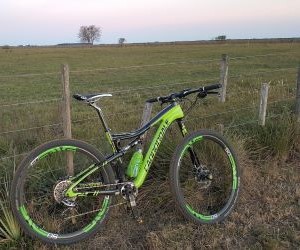Learn how to deal with punctures on long rides with prevention tips, repair techniques, and smart gear choices to keep rolling without stress.
HOW DO I BUILD CONFIDENCE IN CORNERING?
Gaining confidence in cornering is one of the most transformative skills for cyclists looking to ride faster and safer. This guide breaks down the fundamentals of cornering technique, body position, braking strategies, and drills that help riders progress steadily. Whether you're a beginner or aiming to shave seconds off your descent, mastering cornering can elevate your performance across all terrains.

Core fundamentals of cornering
Cornering isn’t just about leaning into a turn—it’s a technical dance of body positioning, line choice, and timing. Building confidence starts with understanding the physics at play and translating that into consistent habits on the bike.
Body position basics
Your body position affects grip, weight distribution, and control through the turn. The “ready” position—hips back, knees slightly bent, head up—is crucial as you approach. As you enter the corner, lean your bike underneath you while keeping your body more upright to maintain balance.
Keep outside pedal down with weight on it
Look through the corner—not at your front wheel
Keep elbows relaxed and slightly bent
Push the bike, not your body, into the lean
Line selection strategy
A smooth line is safer and faster. Aim to enter wide, apex tight, and exit wide—known as the outside-inside-outside line. This reduces the sharpness of the turn and allows for smoother transitions and better exit speed.
Scan the road or trail early to plan your line
Adjust your speed before the corner, not during
Use landmarks (trees, signs) to gauge entry and exit points
Vision and timing
Your bike follows your eyes. Train yourself to look where you want to go—not where you're afraid of crashing. The earlier you spot the exit, the smoother your path becomes.
Look at the exit of the corner from the moment you approach it
Avoid fixating on obstacles or other riders
Practice “scanning ahead” during every ride
Braking, grip, and surface reading
Knowing how and when to brake, understanding traction, and reading the road surface are all crucial for building cornering confidence. These elements help you ride assertively without second-guessing mid-turn.
Controlled braking techniques
The golden rule: brake before the corner, not in it. Entering a corner too fast and grabbing the brakes inside the turn can cause a loss of traction. Use both brakes evenly before the apex and release as you lean in.
80% of braking power comes from the front brake
Brake in a straight line before leaning
Feather brakes lightly if adjustments are needed mid-turn
Understanding grip and tire traction
Traction depends on tire pressure, surface texture, and lean angle. Too much lean with poor surface grip leads to washouts. A good rule: more speed = less lean; less speed = more lean. Find the balance based on your surface and setup.
Check tire pressure before every ride
On wet or gravel surfaces, reduce speed and widen your line
Use soft compound tires for more grip if cornering is a focus
Reading road and trail conditions
Scan the road or trail for loose gravel, potholes, sand, or oil. Learn to spot these hazards early to adjust your line or braking before committing to the turn.
Avoid sudden lean changes on unstable surfaces
Practice adjusting your line slightly mid-corner when safe
Ride familiar loops multiple times to refine instincts
Practice drills and mindset shifts
Confidence comes from repetition and positive reinforcement. Specific drills can train muscle memory, while adopting the right mindset keeps fear and hesitation at bay. Progress builds one turn at a time.
Structured cornering drills
Drills isolate key movements and help you develop confidence in a controlled setting. Use empty parking lots or wide trails with gentle corners to repeat techniques until they become second nature.
Figure-8 drill: Focus on smooth transitions and consistent lean
Cone slalom: Improves vision, timing, and micro-adjustments
One-brake drill: Ride using only rear brake to learn traction limits
Progressive lean: Increase lean angle gradually each rep
Building a fearless mindset
Mindset influences muscle tension, vision, and decision-making. Replace negative thoughts with cues like “smooth and low” or “look and trust.” Gradual exposure builds confidence better than forcing it.
Ride with more skilled riders and observe their lines
Celebrate small wins—one clean turn is a success
Visualize the perfect corner before rides
Use ride tracking to monitor gradual improvement
Training consistency and terrain variation
Consistent practice across varied terrain accelerates skill development. Don’t stick to the same route daily—seek out different surfaces, turn types, and descent angles to challenge yourself.
Alternate between road, gravel, and trail corners
Practice both left and right turns equally
Track your heart rate to identify fear-induced tension
YOU MAY ALSO BE INTERESTED






